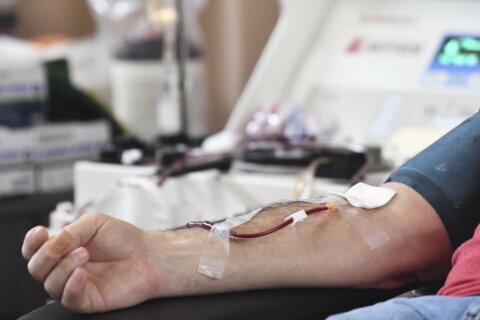This past May, as he does every year, Dr. Mark J. Conroy volunteered in the medical tent at the Dick’s Sporting Goods Pittsburgh Marathon. As is the case each year, Conroy and other medical personnel treated a handful of runners who suffered from heat stroke, which occurs when the body overheats and reaches an inner core temperature of 104 degrees Fahrenheit or higher. Most of the athletes Conroy treated were fit, athletic young men and women who were pushing themselves to achieve a good time on the race.
Not long ago, Conroy, a sports medicine and emergency medicine doctor at the Ohio State University Wexner Medical Center in Columbus, Ohio, provided care for a woman in her 70s who’d suffered heat stroke after sitting in the sun for about 90 minutes. The woman was obese and took medication for high blood pressure, both of which are risk factors for heat stroke. She displayed classic heat stroke symptoms: her temperature was elevated and she suffered dizziness.
The two episodes illustrate how heat stroke can affect people who are young and old, active and sedentary, Conroy says. It can strike people who are exercising vigorously as well as people simply sitting outside in the sun on a hot day. With the marathon runners Conroy treated, heat stroke developed over the course of several hours of physical activity. And it can strike even more quickly than that, he says. “If you’re out exercising at the wrong time of day or have some of the risk factors, you can develop heat stroke in 20 or 30 minutes,” Conroy says. And the case of the elderly and obese woman shows that heat stroke can also affect people who aren’t doing anything vigorous but are exposed to temperatures that are too hot for their body. “You don’t have to be out exercising for two hours; it can happen pretty quickly if you’re vulnerable to heat stroke and shouldn’t be out in 100-degree weather.”
How Long Does Heat Stroke Last?
The length of time that heat stroke affects someone is highly variable, says Douglas Casa, chief executive officer of the Korey Stringer Institute at the University of Connecticut in Storrs, Connecticut. The institute is named after a Minnesota Vikings offensive lineman who collapsed and died of heat stroke after a practice in July 2001. If a heat stroke victim’s core body temperature is brought below 104 degrees Fahrenheit within 30 minutes, he or she typically will recover completely and resume normal activities in two to four weeks, Casa says. If the core body temperature isn’t cooled down quickly enough, a heat stroke victim could suffer long-term complications such as cognitive problems, like memory loss; an intolerance and inability to cope with heat; muscle damage; and kidney and liver problems.
Heat Stroke Symptoms
Whether heat stroke strikes while you’re doing physical labor in the heat or simply sitting in the sun on an unusually hot day, the symptoms are mostly the same, says William W. Chow, a board-certified neurologist and an attending physician at Cedars-Sinai Medical Center in Los Angeles. These symptoms include a high body temperature, nausea, vomiting, rapid breathing, flushed skin, headache, a racing heart rate, confusion, agitation, slurred speech and irritability. Heat stroke can also lead to seizures and a coma.
What to Do for Heat Stroke
Immediate heat stroke treatment involves cooling the victim’s body as soon as he or she shows signs of distress, Casa says. Dousing the person with cold water from a hose or putting him or her in a cold shower can be effective. Wrapping a heat stroke victim in cold towels is also a good measure. Cooling the body of a heat stroke victim is crucial to reduce damage to the person’s brain and vital organs, according to the Mayo Clinic.
Heat stroke kills hundreds of people in the United States every year. In 2015, the latest year for which such statistics are available, heat stroke claimed 335 lives in the United States, according to the Centers for Disease Control and Prevention. “Heat-related illness is all too common during the summer months and can lead to serious complications and even death,” says Dr. Reginald Mason, total health lead for Kaiser Permanente in Atlanta. “While certain people are at higher risk for heat-related illness, anyone of any age, especially if they exercise in hot weather, can suffer from this. It is important to recognize that even well-conditioned athletes can suffer severe consequences from overexertion in the heat.”
[See: 6 Health Hazards to Watch Our for This Summer Other Than Skin Cancer.]
Exertional and Non-Exertional Heat Stroke
There are two kinds of heat stroke: exertional, which is associated with vigorous physical activity, and non-exertional.
Exertional heat stroke is associated with an increase in core body temperature brought on by “intense physical activity in hot weather,” according to the Mayo Clinic. Anyone exercising or working in hot weather can get exertional heat stroke, but people who aren’t accustomed to high temperatures are more vulnerable than people used to warmer climates. Exertional heat stroke can even strike — and kill — young professional athletes. In July 2001, Stringer, the 335-pound offensive lineman for the Minnesota Vikings, collapsed after practicing on a stifling day where the temperature was in the low 90s and the humidity was high. Team personnel carted Stringer, 27, off the field; he had a core body temperature of 108.8 degrees Fahrenheit. Stringer died in a medical center.
By contrast, non-exertional heat stroke can develop in people who are not exerting themselves physically but are in weather that’s too hot for their body, Conroy says. The obese 78-year-old woman Conroy treated suffered from non-exertional heat stroke. The elderly, young children and anyone who’s dehydrated at any age are vulnerable to non-exertional heat stroke, Conroy says. People with chronic health conditions, like obesity, are also at risk for heat stroke, as are people who take blood pressure medications such as beta blockers and diuretics. Some drugs that physicians prescribe for psychiatric disorders, like clozapine, can also harm the body’s ability to regulate its core body temperature. Drinking alcoholic beverages — which dehydrate the body — can make one vulnerable to heat stroke, too, Conroy says.
[See: Do You Sweat Too Much?]
Heat stroke causes alterations in sweating, according to the Mayo Clinic. In heat stroke caused by being in hot weather, your skin will feel hot and dry to the touch. That’s a little different from heat stroke brought on by exercising strenuously in the heat, which can cause your skin to feel slightly moist or dry.
It’s important to remember that on particularly hot days, our hearts need to pump harder to prompt our bodies to sweat, which cools the body. This can cause stress on the cardiovascular system of people who already have a weakened heart. This situation can become deadly during a heat wave. A 1995 heat wave in Chicago claimed more than 700 lives, authorities said. Of those who died, 39 percent had prior heart conditions, according to a 2014 study published by the National Center for Biotechnology Information, part of the National Institutes of Health.
Heat Stroke Prevention
Whether you have a heart condition, are elderly and obese or young and athletic, it’s important to take steps to prevent heat stroke. Experts recommend these strategies:
1. Try to avoid being outdoors during the hottest part of the day. “Instead of mowing the lawn in the middle of the day when it’s 100 degrees, I suggest you do it at 8 a.m. or at night,” Conroy says. “Sports teams take this advice; many of them practice early in the day rather than in the middle of the day, when temperatures are highest.” Some people, like construction workers or traffic officers, have no choice as to when they work. If you’re exercising or working in the heat, modify your work-to-rest ratio depending on the environmental conditions, Casa says. “If it’s hotter outside, you’d do more rest than physical activity,” Casa says. You should also try to acclimatize yourself gradually to hotter temperatures over a span of a week to 10 days. Slowly increase the amount and intensity of work or exercise you do in the heat.
2. Drink lots of water. “Hydration is the single most important aspect of heat stroke prevention, since sweating is the most important mechanism our bodies have to get rid of heat,” says Dr. Dustin J. Calhoun, assistant professor in the department of emergency medicine at the University of Cincinnati College of Medicine. Be careful to work in some snacks with your water intake, he says. Drinking too much water without consuming any electrolytes — such as calcium, potassium and magnesium — can dilute the body’s sodium, leading to such problems as headache, nausea, vomiting, muscle spasms and seizures. “Simply eating a snack while drinking water is the safest way to go,” Calhoun says.
3. Wear loose-fitting, light-colored clothing. You don’t want to wear tight-fitting clothes in hot weather, says Dr. Raymond L. Fowler, professor and chief of emergency medicine services at UT Southwestern Medical Center in Dallas. You’re better off wearing clothes that are loose enough to allow breezes to pass through, he says. Same goes for light-colored clothing, which absorbs less heat than dark-colored items. Wear a hat with a brim that shields the sun from your face.
[See: 16 Ways Your Body Adjusts to a New Climate.]
4. Take frequent breaks. If you have to be outdoors during the hottest part of the day, take as many opportunities as you can to get out of the heat, Conroy says. If there’s an air-conditioned public building nearby, go inside for a few minutes. Shade is another option — if it’s available, spend as much time as you can in it, as opposed to being in the sun. One of the best options for people who play team sports is to cool down with cold and wet towels during any opportunity when the sport presents a break during a game or practice or at halftime, Casa says.
More from U.S. News
7 Signs You Should Stop Exercising Immediately
9 Surprising Facts About Sunscreen
What You Need to Know About Heat Stroke originally appeared on usnews.com







